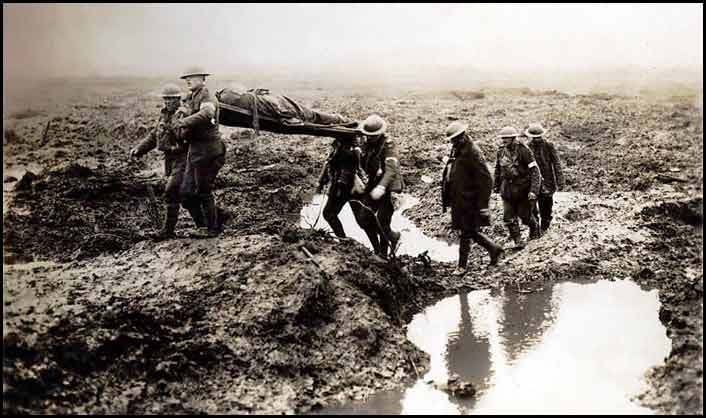Verow,
Thank you for the very beautiful and interesting pictures of the Belleau Wood Cemetery .It is good to know our fallen soldiers are in such a beautiful place .I look forward to seeing your photographs from your visit on 6 June.
ColBill
Colbill,Thank you very much that you like the photos, when I'm visiting such places .
I love always to make lots photos to share them with you all .
Vee
During WWI, the Fifth and Sixth Marine Regiments were combined to form the 4th Marine Expeditionary Brigade. That brigade was in turn attached to the Army's Sencond Infantry Division.
info from:
ARMY LINEAGE SERIES
MANEUVER AND FIREPOWER
THE EVOLUTION OF DIVISIONS AND SEPARATE BRIGADES
by
John B. Wilson
http://www.history.army.mil/books/Lineage/M-F/index.htm
Chapter III: The Test -- World War I
One Regular Army infantry division, the 2d, was organized in France. When the first troops deployed, the U.S. Marine Corps wanted a share of the action, and Secretary Baker agreed that two Marine regiments should serve with the Army. The 5th Marines sailed with the 1st Expeditionary Division, and Pershing assigned them as security detachments and labor troops in France. Shortly thereafter he advised the War Department that the marines did not fit into his organizational plans and recommended that they be converted to Army troops. The marines, however, continued to press for a combat role. Eventually the Departments of War and the Navy agreed that two Regular Army infantry regiments, initially programmed as lines of communication troops, and the two Marine regiments (one serving in France and one from the United States) should form the core of the 2d Division. The adjutant general informed Pershing of the decision, and Brig. Gen. Charles A. Doyen, U.S. Marine Corps, organized the 2d Division on 26 October 1917 at Bourmont, Haute-Marne, France. The division eventually included the 3d Infantry Brigade (the 9th and 23d Infantry and the 3d Machine Gun Battalion), the 4th Marine Brigade (the 5th and 6th Marines and the 6th Machine Gun Battalion [Marines]), the 2d Field Artillery Brigade, and support units
I always thought of poppies when I read Flanders Field. Then I saw this picture of Flanders Field today and finally understood John McCrae's poem.

It was raining too hard today to put out the flag. And I couldn't find any one selling poppies this year. Some of you might remember that I used to go to town with my Dad to sell Poppies for the American Legion. It was a tough one this year
Chateau-Thierry: The Battle for Belleau Wood
Explaining the Battle for Belleau Wood is a doubly difficult challenge. The three-week long action was simply a confused mess tactically. None of the participants ever quite knew where they, the front line or the enemy were inside that mile-square dark forest. ...
http://www.worldwar1.com/dbc/ct_bw.htm
Vee
Merci. Thanks for continuing this very interesting post. I sometimes forget all the fantastic info which our site has to offer.
A short video with historical footage of the bloody Marine Corps participation in World War I during the famed battle of Belleau Wood in June 1918, during which the Corps earned its nickname from the Germans, Teufel Hunden, or "Devil Dog".
In the face of massive casualties and five failed attempts to take the real estate, the tenacious Marines were finally successful on a sixth attempt. While the narrator leaves out not only the Devil Dog reference and fact that the French renamed the area the "Wood of the Marine Brigade" but General Pershing's legendary reference: "The deadliest weapon in the world is a Marine and his rifle!".
Vee
It is so hard to fathom 10,000!!
